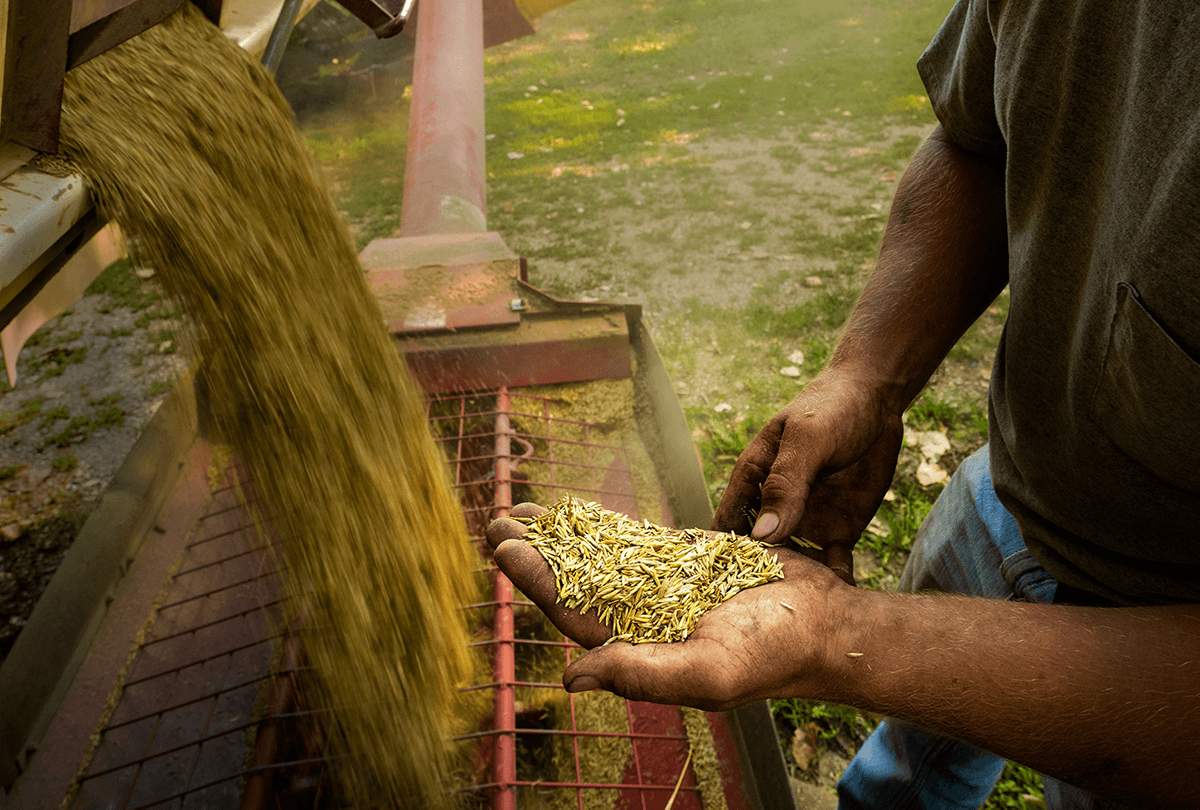'It's really, really exciting': Clean-water crops are on the verge of something big
Experts say that the amount of Kernza planted each year could double from here on out. (Photo: Dodd Demas)
The idea behind clean-water crops (also known as "continuous living cover" or CLC) seems like a no-brainer: (A) Farm operations need to make a profit, and (B) We have new profitable crops that help the environment, rather than hurt it.
(A) + (B) = CLC. Since we know that keeping living roots in the soil year-round (the longer the better) can reduce agricultural nutrient pollution in our waters here and downstream, let's invest in agriculture systems that achieve that year-round cover while maintaining farm prosperity. The thing about a no-brainer, though, is that if it were obvious and easy, we'd already be doing it. Bridging the gap from that idea to real-world implementation is the hard part.
After years in the making, it looks like continuous living cover agriculture might be on the verge of something big, maybe even revolutionary.
The latest news on clean-water crops
Readers of the Water Blog know all about Kernza, the long-rooted perennial wheat that has been the subject of headlines for a while now. And you've probably also heard us mention winter-hardy camelina and pennycress, oilseed crops (like soy or canola) that can be planted late in the growing season when the land would be otherwise bare. These crops protect the soil until spring and can then be harvested for profit.
Researchers and their farmer partners have spent years breeding and testing both of them for cold-weather climates like Minnesota. Camelina producers have already carved out a toehold in places like western Canada and Montana, but generally speaking, these and other clean-water crops have yet to hit the big time.
That's about to change. In a new story from Minnesota Public Radio, FMR's longtime friend and collaborator Dr. Don Wyse, the co-director of the Forever Green Initiative, shared his belief that better days are just around the bend: "It took us 30 years to get to this point," Wyse told MPR, "but we now have what I call real crops that have real possibility for the marketplace and for planting by farmers. And it's really, really exciting."
Wyse's Forever Green colleagues are just as enthusiastic. Dr. Jake Jungers says that Kernza acreage could double each year from this point, while Colin Cureton, who helps lead business engagement for the program, likens Kernza's growth potential to renewable energy, an industry that has skyrocketed since its own inflection point a few decades back.
It's not just Kernza: The U of M just published an engrossing article about the rapid development of commercial pennycress by Wyse, fellow professor David Marks, and a host of others at the U. And No-Till Farmer magazine (what, you don't subscribe to that one?) chronicles how Forever Green's progress on camelina means that we might soon see millions of acres of that crop planted across the Upper Midwest and Northern Plains.
In the world of agriculture, momentum and critical mass are very real concepts. Clean-water crops have hovered for years somewhere on the scale between "interesting premise" and "niche crops," but decades of dedication from experts at Forever Green, other breeding programs, and sustainability-minded farmers means that we're nearing the threshold. Pretty soon, farming these crops might be a no-brainer indeed.
You can help!
Become a River Guardian
Sign up to become a River Guardian and we'll let you know when important river issues arise, including opportunities to support the advancement of clean-water crops. We make it quick and easy to contact decision-makers and make your voice heard. River Guardians are also invited to special events, including happy hours, to learn more about important legislative and metro river corridor issues.
Keep up to date
We write regular updates about key environment and water quality issues on our Water and Legislative Updates blog, and share them on social media (Facebook and Twitter) and in our twice-monthly e-newsletter, Mississippi Messages.
